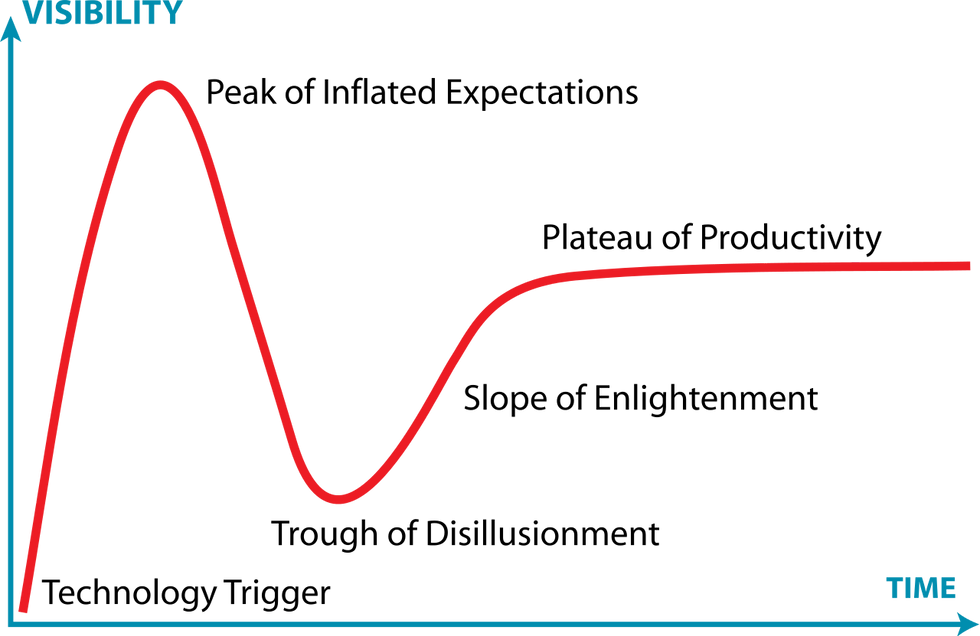Tradeoffs - So What?
- Joe
- Nov 24, 2019
- 4 min read
If you’ve been a regular follower of my blog, you’ve probably read some posts about tradeoffs. And while some readers might have picked up an understanding of why these tradeoffs matter, I imagine others have not. This post is meant to give some implication to these tradeoffs in a (hopefully) clear and concise manner.
I’m no fool, and I’m not arrogant. I know the numbers, and I’m guessing some (or *gasp* most) of you don’t even read my posts and have no clue what I’m talking about. Despite the protests of my ego, I’m gonna go ahead and say that’s alright. If I execute this post well enough, you will be compelled to go back and catch up on the tradeoffs you’ve neglected.
Let’s get to it. What is a tradeoff?
According to the built in dictionary on my Mac (Wikipedia informs me this is actually the New Oxford American Dictionary) , a tradeoff is “a balance achieved between two desirable but incompatible features.” In more simple terms, you have to make a tradeoff when two things that you want just don’t go well together. A useful way to think about it is as a spectrum: on one side of the spectrum, you have one outcome that you’re trying to bring about. On the other end, there’s another outcome. While you can exist somewhere in the middle, you’ll never have the full strength of either outcome in the middle.
To explore this further, let me talk about a new concept: Pareto optimality. Pareto optimality comes into play when you want to maximize or minimize multiple potentially contradictory goal. More particularly, it’s achieved when you can’t get closer to one goal without getting further from another. This is what the graph usually looks like:

If your intuition tells you this plot is just some arbitrary function I threw into RStudio, you should tell your intuition to shut up and let me use it to illustrate. Imagine each axis (horizontal and vertical, stay with me) represents something you want to minimize. Obviously, the best place to be is at the origin. And if you decouple the decisions and only consider one axis, you’d want to be on the edge of the graph, either on the bottom or the left.
This graph shows a tradeoff. Namely, you can’t get closer to one axis without getting further from the other. In a way, the idea of Pareto “optimality” is misleading; the curve really is a map of feasibility. It shows where your feasible (best) alternatives actually get you with respect to your perfect situations.
Now, this curve doesn’t give any clear decision-making advice. In a situation where you care about both things equally, sitting in that “corner” of the function makes sense. But if you care about one thing more than the other, your location is going to skew a little. For the sake of this post, I’m going to call this your “goal skew.” Goal skew is an effect of (and therefore describes) the values behind your decision. More explicitly, it should be a direct consequence of how much you actually care about the two outcomes.
So what does this say about the tradeoffs I’ve mentioned in previous posts? Well, these tradeoffs tend to be “constitutive.” According to my Mac, that word is defined as “forming a part or constituent of something; component.” In my (perhaps slightly stretched) usage of the word, it means these tradeoffs are an unavoidable, fundamental component of the relationship at hand. In visual terms, this means the Pareto curve is a lot straighter:

If you zoom way in on the top left, you can see a little curvature. But it is very slim.
Here’s the first thing that makes these tradeoffs remarkable: you can’t finesse your way out of them. Sustainability doesn’t trade off with your current performance just temporarily; it’s a fundamental part of the relationship. And while you wish you could pick something that both gives you a lot of control and a lot of convenience, they are diametrically opposed at any given moment.
At this point, you should have a slightly clearer picture of why I think these tradeoffs are interesting. That these relationships include a strict and unavoidable tradeoff is an interesting characteristic of these situations.
But why should we care? Beyond the thought exercise, what’s the point?
The relevance of these tradeoffs is a direct consequence of when they pop up. Take, as a simple example, choosing Excel or Python for a project, a manifestation of the convenience-control tradeoff. If you’re making this decision for a single homework problem, the choice is pretty inconsequential. But the same kind of decision can be made on the scale of an entire organization. In these cases, the decision that gets made now can have repercussions far into the future.
These tradeoffs give us a connection between the impactful and the trivial, a way to learn about making big decisions from our small decisions. While you shouldn't just implement the same strategy for every incarnation of the same tradeoff, thinking analytically through these tradeoffs on a small scale will make you more prepared to think about them on a larger one when the opportunity arises. Once you have a good understanding of these tradeoffs, identifying them in the "real world" is both simple and impossible to ignore. In those situations, the principles that govern who these tradeoffs affect our lives become invaluable tools for making effective, efficient decisions.



Comments